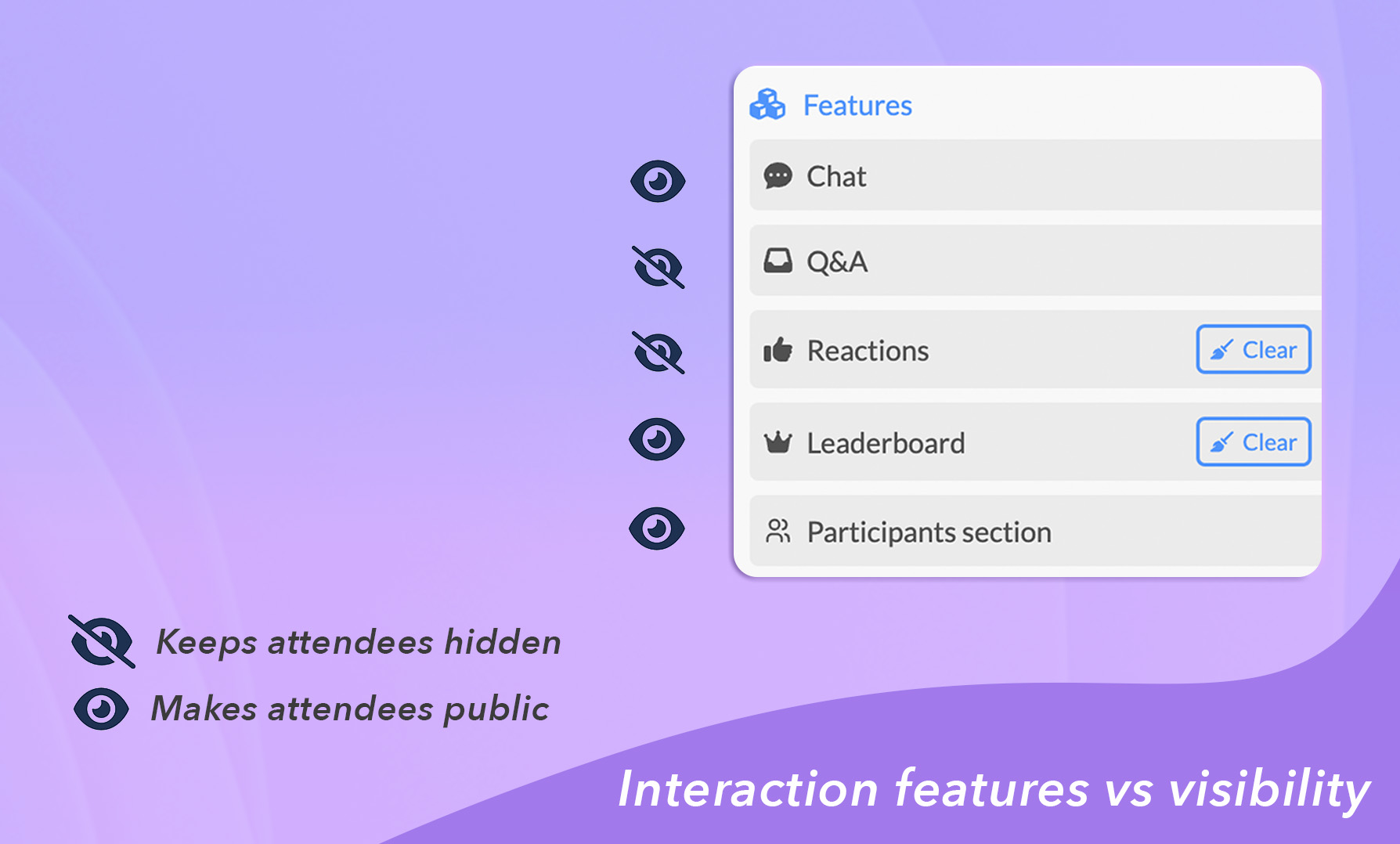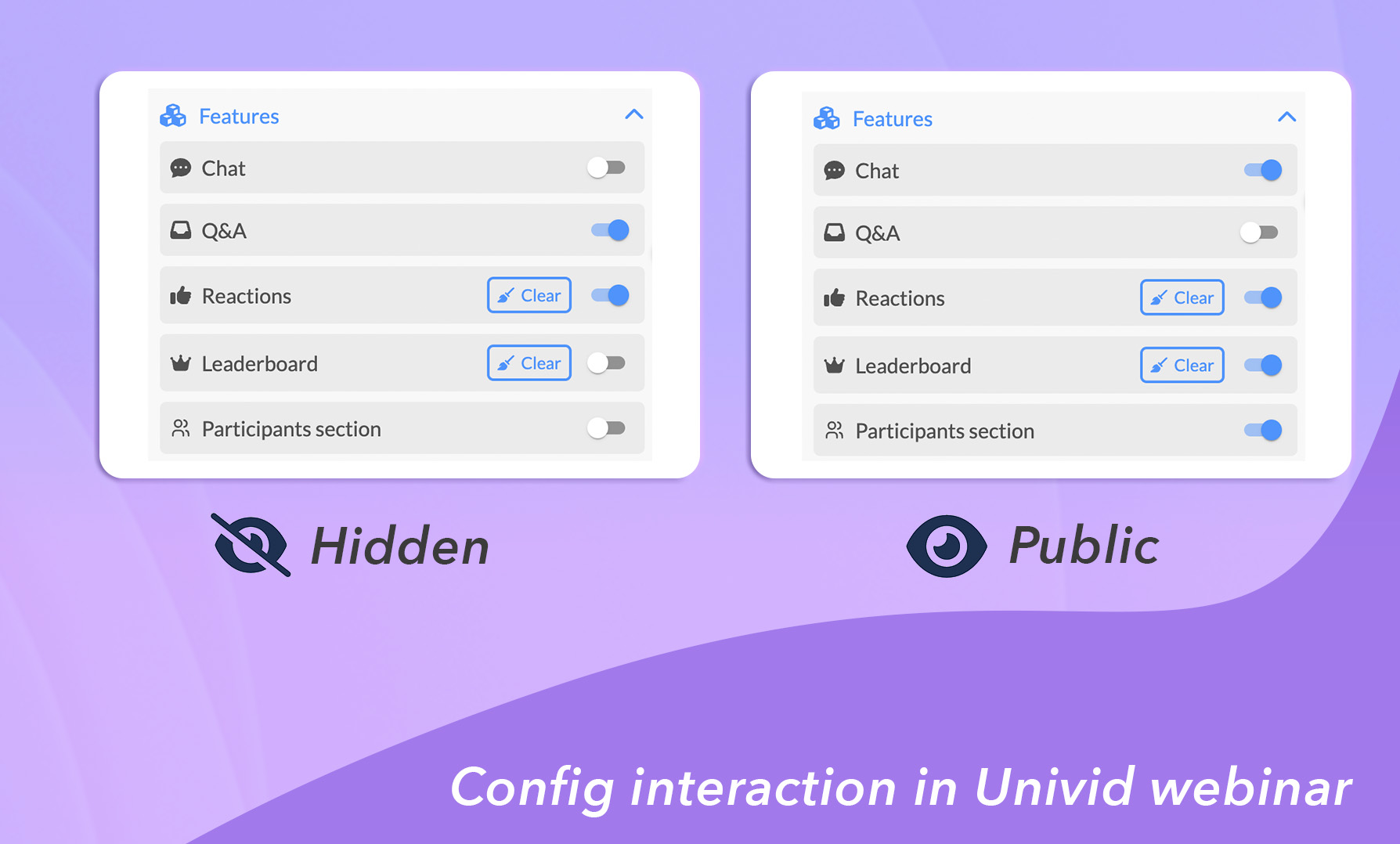How to set up a webinar where attendees are hidden?
So you want to hide your attendees from each other? Maybe it's an audience of customers, partners, or even competitors. A common webinar requirement -that can easily be done in Univid:s webinar platform. Here is how.
Innehåll
So in a webinar you would typically never see the audience in video. Yet, in some cases you have the option to see the attendees' names, the counter of how many attendees are live watching, and a bunch of information - which you might not want to have visible.
How do you set up a webinar where the attendees are hidden from each other?
Attendees in Univid are never visible for each other in video - unless you actively invite them up on stage, or in the studio.
In Univid, there are a few different interaction features that you can activate/deactive depending on whether you want an open transparent climate, or a more closed controlled format. Below you can see what features open up for attendees being able to see each other, and which ones keep attendees hidden 👇

Setting up a webinar in Univid where attendees are hidden in Univid - is as simple as choosing to activate the right interaction features in the left sidebar menu 👇

Hide webinar attendees from each other - 6 reasons why you should
Hiding webinar attendees from each other is a strategic decision that can enhance the overall experience of a webinar. Here are 6 key reasons why it might be a good approach to hide your attendees from seeing each other:
Privacy Protection: Ensuring attendee privacy is crucial, especially in large or public webinars. By hiding the list of attendees, organizers can protect the identity and information of each participant, making attendees feel more secure and comfortable in sharing their thoughts.
Focused Engagement: Without the distraction of seeing who else is attending, participants are more likely to focus on the content of the webinar itself. This leads to better engagement with the material presented and with the host or speakers.
Reduced Social Pressure: In some cases, knowing who else is attending can create unnecessary social pressure or anxiety among participants. Hiding attendees helps reduce this pressure, allowing individuals to focus more on the content rather than on who is watching.
Encouraging Questions and Participation: Participants may feel more inclined to ask questions or participate in discussions when they know that their identity is not exposed to other attendees. This can lead to more open and fruitful interactions.
Preventing Unwanted Networking: In certain settings, participants may prefer not to be contacted by other attendees for networking purposes. Hiding attendee lists helps prevent unsolicited contact and ensures that networking happens in a more controlled and welcome manner.
Professional Atmosphere: Maintaining a professional atmosphere is easier when attendee information is not publicly displayed. This helps keep the focus on the webinar's content and objectives rather than on the attendees themselves.
Hide webinar attendees from each other - 6 reasons why you should NOT
Here are five reasons why you might choose not to hide webinar attendees from each other (in text):
Networking Opportunities: Allowing attendees to see each other's names and profiles can foster networking and collaboration. This is particularly beneficial in industry-specific or professional development webinars where participants may benefit from connecting with peers who have similar interests or challenges.
Community Building: Visible attendee lists can help build a sense of community and camaraderie among participants. This is especially valuable in recurring webinars or series where fostering a sense of belonging and mutual support can enhance the overall experience.
Increased Interaction: When attendees can see who else is participating, it may encourage more active and dynamic interactions, including discussions and question-and-answer sessions. This visibility can stimulate more lively and engaging conversations.
Transparency and Trust: Displaying attendee lists can add a level of transparency and openness to the webinar, making it clear who is involved and potentially building trust among participants. This can be particularly important in settings where openness and inclusivity are valued.
Feedback and Collaboration: Knowing who else is attending can enable participants to offer more targeted and relevant feedback, suggestions, or questions. It also allows for potential collaborative follow-ups after the webinar, as attendees can identify and reach out to others with shared interests or expertise.
